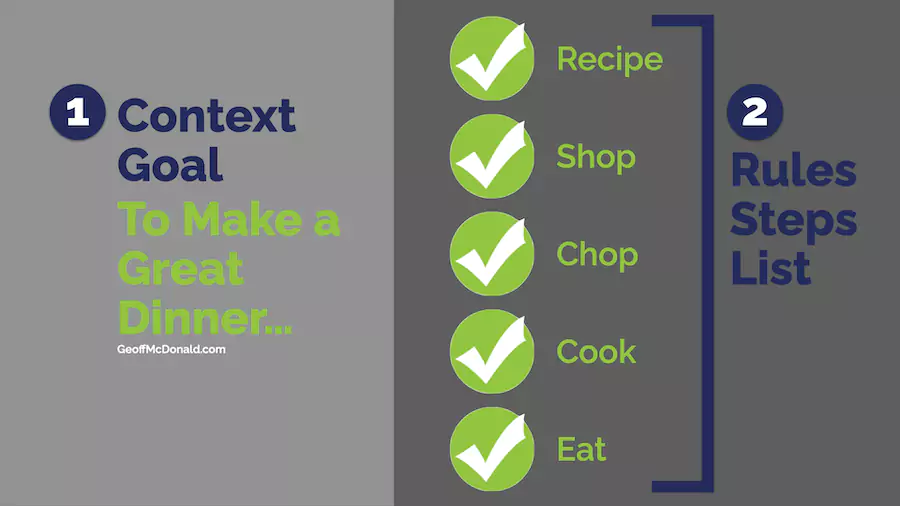How to write a manifesto in 60 seconds
A manifesto is a powerful tool for creating the future. This might be for your personal use, team, organisation or community – the structure and format are essentially the same.
In this post, I’ll walk you through the two essential steps you need to write a manifesto. It will only take 60 seconds to explain (watch the video).
Alas, it will take you a little longer to write your manifesto. But as they say in the classics, enjoy the journey. In this case, enjoy engaging in the questions of:
- What do you want?
- What inspires you?
- And what do you believe?
Step One: Define Your Context or Goal
The first step is to define what you want.
The usual way people talk about this is to define your goal. In the video, I used a simple example of how to make dinner.
Here are some other examples.
- Personal: To live a good life, to be the best you can be, to list the things you want to accomplish (a bucket list is a type of manifesto)
- Team: To fulfil our project on time and under budget, to build a high-performing team, to win the premiership this season
- Organisation: To be carbon neutral by 2030, to live true to the purpose we have defined, to be a thought leader in our industry
- Community: to end domestic violence in our town, to provide the best disability services in the country, to build healthy neighbourhoods
When I work with business clients and thought leaders, we make a slight variation on this: we define the context.
Given this is a business situation, this means we are defining the area of business that we are working in and ultimately the context shift that you are suggesting your clients take.
For more on Context Shifting read the post: How Thought Leaders earn money from what they know.
Step Two: State your Steps or Rules
The second step is to define the actions or principles that you need to achieve your goal (or to win in the context you have defined).
The simple example I share in the video is based on specific actions. It has five steps: Recipe, Shop, Chop, Cook and Eat.
Here are some other examples:
- Personal: You might write down a list of values (things that are important to you), a set of beliefs (I believe this to be true) or a set of actions (like a bucket list)
- Team: This might include a set of rules defining how you will interact with each other (eg treat others as you want to be treated)
- Organisation: This might include a set of cultural habits or practices that you will build into the organisation. For example, to build a culture around Deep Work you might ban meetings until 11 am.
- Community: This could be a list of goals that you would like to achieve within your community or perhaps some guidelines as to what each individual can aspire to.
Your steps or rules could also be values, beliefs, principles, guidelines, goals or steps.
More on how to write your Manifesto
If you’d like some more information on how to write a manifesto, here are some resources to consider:
- Three big reasons to write a thought leader manifesto
- Thought Leadership Content – What is a Manifesto?
- To inspire you further, there are over 250 examples of a manifesto on this site: https://1000manifestos.com/
If you have any questions about this, please add a comment below.




